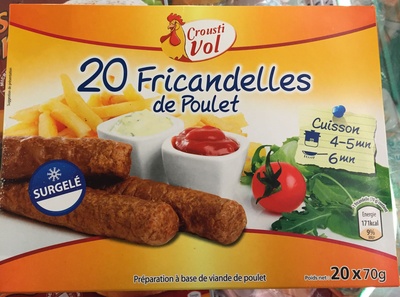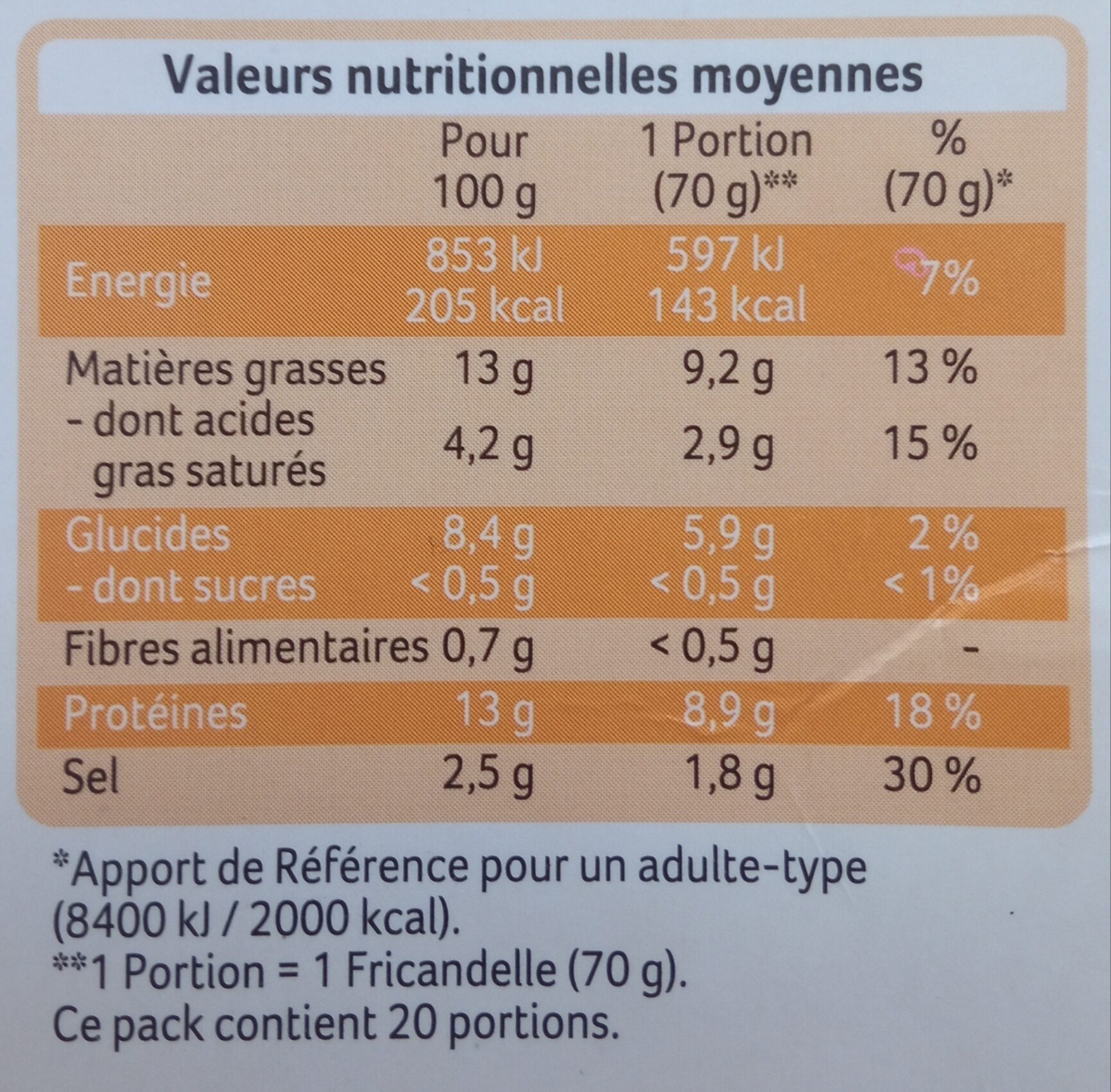20 fricandelles de poulet surgelé - Crousti Vol - 20 x 70 g
Ambiguous barcode: This product has a Restricted Circulation Number barcode for products within a company. This means that different producers and stores can use the same barcode for different products.
×
This product page is not complete. You can help to complete it by editing it and adding more data from the photos we have, or by taking more photos using the app for Android or iPhone/iPad. Thank you!
×
Barcode: 26053387
Common name: Préparation à base de viande de poulet
Quantity: 20 x 70 g
Brands: Crousti Vol
Categories: Meats and their products, Frozen foods, Meals, Meat preparations, Meats, Prepared meats, Frozen ready-made meals, Frikandel
Traceability code: BE B466 EC
Stores: Aldi
Countries where sold: France













